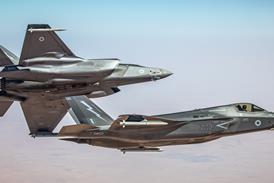Andrew Doyle/AUGSBURG
Augsburg Airways is expected to decide by the end of the year whether to proceed with the acquisition of up to 15 30-seat regional jets which would be used to open up new longer-range routes on behalf of Lufthansa.
Meanwhile, the airline has been informed by Bombardier of a further delay to deliveries of 70-seat Dash 8 Q400 turboprops, caused by the recent strike by workers at the Canadian manufacturer's Toronto factory. The Team Lufthansa franchisee had been expecting to receive the first of five Q400s four months late, in October, but this has now been pushed back to mid-November.
Bombardier is already paying for interim wet-lease capacity for Augsburg Airways after failing to meet the original timetable, which called for the airline's first Q400 to be handed over in June.
Augsburg Airways vice president sales and marketing, Klaus Fischer, says the company is evaluating the Fairchild Dornier 328JET, Embraer ERJ-135 and the 40-seat version of the Canadair Regional Jet Series 200 for its jet requirement, but has yet to decide whether to proceed.
"There is a project study going on to see whether it's feasible or not," says Fischer. "We have to make the decision this year," he adds. "This is the third time we've had it on the table but we've been hesitating."
Fischer says that for the acquisition to go ahead, the airline must be satisfied that passenger yields can support the "high fixed costs" associated with jet operations, and the current pilot shortages being experienced by German regionals must be alleviated.
The existing fleet includes 11 Dash 8-300s, a pair of -200s and a single -100. Augsburg airport's 1,490m-long runway is to be extended to 1,592m, to help support jet operations.
Fischer says the carrier could require a fleet of 70-seat regional jets in the longer-term.
Augsburg Airways made a DM4 million profit in 1999 on revenues of DM187 million. In the first six months of this year passenger numbers rose 14.7% compared with the same period a year earlier, to 468,295, but a sharp increase in capacity pushed the average load factor down 1.3 points to 56.3%.
The airline is wholly-owned by German paper manufacturer Haindl Papier, and Fischer says any future capital increases needed to fund the acquisition of jets could be achieved through a partial flotation or the sale of a minority stake.
Source: Flight International























